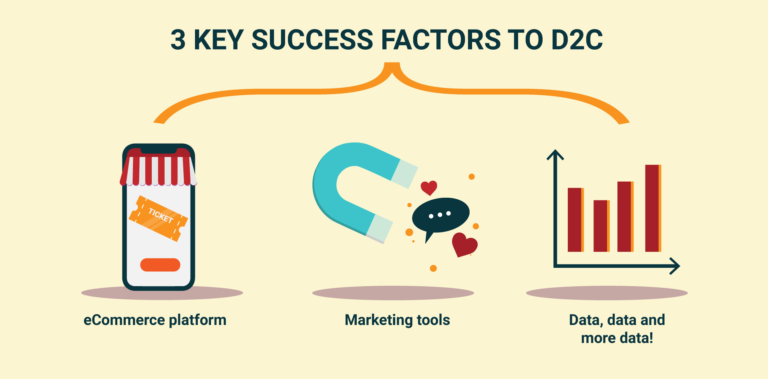In today’s dynamic digital landscape, Direct-to-Consumer (DTC) brands face a thrilling yet complex challenge: crafting a winning strategy that seamlessly blends technology, data, and creativity to acquire customers, drive sales, and forge lasting relationships. That’s where Xtrordinate, your trusted Commerce Media Consultancy, steps in. This comprehensive DTC Guide will empower you to navigate the ever-evolving world of DTC. We’ll explore the essential technology stacks, data-driven insights, and cutting-edge tactics that propel brands towards extraordinary success. Buckle up, and let’s transform your DTC journey!

Here’s a breakdown of the key technology layers for a winning DTC strategy, with details, vendor examples, and real-life use cases:
I. Customer Acquisition & Targeting
Demand-Side Media Facilitation (DSPs): Platforms enabling automated ad buying across websites, apps, and streaming services, with advanced targeting and bidding capabilities.
Retailer Platform Facilitation: Tools specialized in managing advertising and product placement within e-commerce marketplaces, facilitating connections with shoppers at the point of decision.
Retailer Media Networks: Advertising platforms within major retailers where brands can reach high-intent shoppers directly through sponsored listings, banner ads, etc.
Influencer & Social Tools: Platforms to discover, manage, and collaborate with social media influencers for authentic product endorsements and social proof.
Live Commerce: Technologies enabling real-time, shoppable live-streaming experiences where brands demonstrate products, answer questions, and drive immediate sales.
Social Platforms: Organic and paid advertising on social media for brand building, community engagement, and launching targeted campaigns.
Affiliate & Publisher Platforms: Networks for brands to connect with bloggers, review sites, and coupon websites to promote their products in exchange for a commission-based model.
Coupon & Cashback Platforms: Websites and apps that offer users coupons, discounts, or cashback rewards to incentivize purchases.
II. Data, Analysis & Personalization
Analytics & Attribution: Tools to track website traffic, user behavior, campaign performance, and sales across channels, helping understand what drives results.
CDP (Customer Data Platform): Software that gathers customer data from diverse sources – website interactions, CRM, social media, email – into unified profiles for segmentation and personalized marketing.
Data Collaboration: Solutions enabling secure, privacy-compliant data sharing between brands, retailers, ad platforms, and analytics providers for enriched insights and better targeting.

How It All Works Together
The true power of a DTC strategy lies in the seamless integration of these technology layers for a full-funnel customer experience:
Targeted Acquisition: DSPs, social media platforms, retailer media networks, and influencer marketing work in tandem to reach the correct audiences at the right time and bring them to your website. Precision targeting, based on data drawn from analytics tools and CDPs, ensures you’re spending ad dollars wisely.
Frictionless Conversion: Your e-commerce platform is the heart of the buying experience. It needs to be intuitive, visually appealing, with fast load times and a smooth checkout process supported by reliable payment providers. Live commerce features help address any pre-purchase questions and create a sense of urgency.
Data-Driven Personalization: Analytics platforms, CDPs, and data suppliers work behind the scenes to gather rich insights on every customer interaction. This information fuels personalized product recommendations, email offers, and relevant ad retargeting, increasing purchase likelihood throughout the journey.
Building Relationships: After a purchase, commerce marketing platforms help nurture customers with loyalty programs, automated email flows, targeted SMS campaigns, and exceptional customer support. This fosters brand loyalty and repeat purchases, increasing customer lifetime value
Continuous Optimization: Analytics tools provide constant feedback on campaign performance, demographics, platform effectiveness, and conversion rates. Data collaboration platforms enable sharing insights with retail partners or ad networks, refining targeting and boosting overall ROI.
The Whole is Greater Than the Sum of Its Parts:
Each technology layer plays a critical role, but the real magic happens when used strategically as a unified system:
This integrated, data-driven strategy powers customer acquisition, provides exceptional online experiences, builds lasting relationships, and constantly optimizes your DTC operations for maximum growth.
Ready to elevate your digital marketing? Contact us now and let's unlock the full potential of your brand together!
All rights researved Xtrordinate Pty Ltd © 2024
